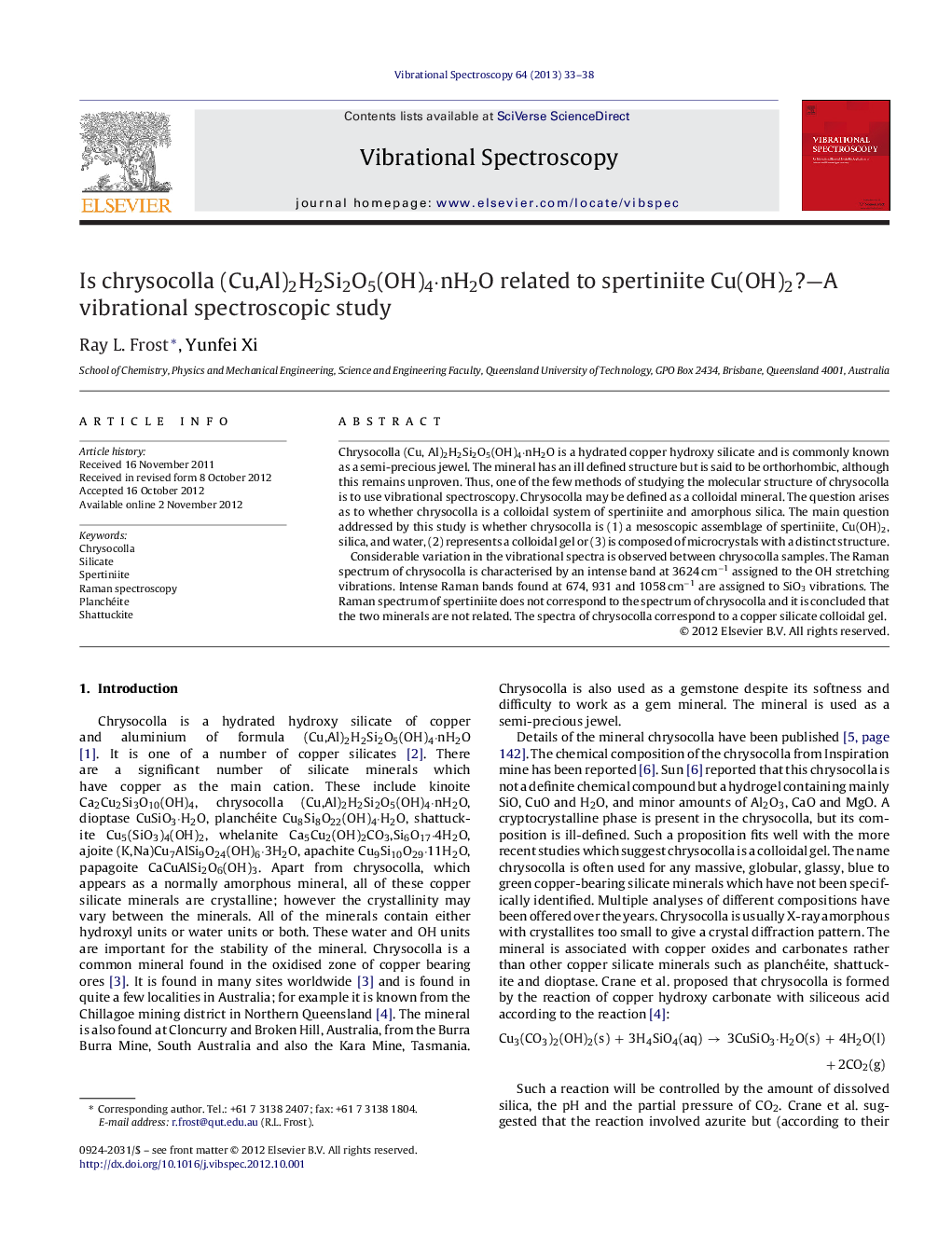| Article ID | Journal | Published Year | Pages | File Type |
|---|---|---|---|---|
| 1250391 | Vibrational Spectroscopy | 2013 | 6 Pages |
Chrysocolla (Cu, Al)2H2Si2O5(OH)4·nH2O is a hydrated copper hydroxy silicate and is commonly known as a semi-precious jewel. The mineral has an ill defined structure but is said to be orthorhombic, although this remains unproven. Thus, one of the few methods of studying the molecular structure of chrysocolla is to use vibrational spectroscopy. Chrysocolla may be defined as a colloidal mineral. The question arises as to whether chrysocolla is a colloidal system of spertiniite and amorphous silica. The main question addressed by this study is whether chrysocolla is (1) a mesoscopic assemblage of spertiniite, Cu(OH)2, silica, and water, (2) represents a colloidal gel or (3) is composed of microcrystals with a distinct structure.Considerable variation in the vibrational spectra is observed between chrysocolla samples. The Raman spectrum of chrysocolla is characterised by an intense band at 3624 cm−1 assigned to the OH stretching vibrations. Intense Raman bands found at 674, 931 and 1058 cm−1 are assigned to SiO3 vibrations. The Raman spectrum of spertiniite does not correspond to the spectrum of chrysocolla and it is concluded that the two minerals are not related. The spectra of chrysocolla correspond to a copper silicate colloidal gel.
